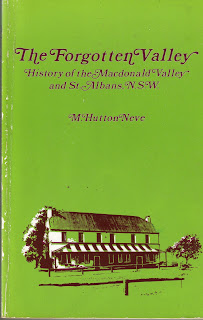Way back when Grumpy Old Journo began, I promised the blog would be unpredictable. But I'd wager no one thought they'd see me praise Janet Albrechtsen.
Your blogger is moderately to the left, and it's something like apostasy for a leftie to nod approval as he reads the hard-right columnist in The Australian.
Yesterday, waiting for lunch in the Cricketers Arms hotel in Newcastle, I came across her column attacking the High Court judges – excepting Michael Kirby, usually a target of the right wingers – for having ruled that a jury was wrong when it decided a restaurant review was not defamatory. And I did nod my agreement with Janet.
Here's part of what she said:
In 2003, The Sydney Morning Herald food critic Matthew Evans was unimpressed with Coco Roco, which billed itself as “Sydney’s most glamorous restaurant”. The limoncello oyster had flavours that “jangle like a car crash”. The carpaccio arrived with a “dreary roast almond paste”. And, Evans asked, what was the chef thinking by adding apricot halves to a sherry-scented white sauce adorning a prime rib steak?
Food critics can be a snippy lot. But that’s the gig. Anything less and they become spruikers for prime rib steak laced with sherry-scented sauce and apricot halves.
The restaurant owner sued for defamation under NSW’s 7A system where a jury decides whether something is defamatory. In a separate later hearing, a judge decides on whether defences are made out and on damages payable. The jury found Evans’s review did not defame the owner of Coco Roco. On appeal, the NSW Court of Appeal tossed the jury verdict in the bin, preferring its own view that the review was defamatory. Late last week, the High Court agreed.
Although Australia has a new set of uniform defamation laws, in some states and territories the jury will still determine what is defamatory. That is why the High Court case sends a chilling message.
Ms Albrechtsen is right. What's the point of a jury system when a bench of High Court judges – who, by their very occupation are somewhat remote from everyday community values – can so easily decide the jurors have reached a perverse decision.
And what happens next? As I understood the legal process in libel cases, the matter should now go back to a judge – who now must accept that the restaurant review carried defamatory imputations, but may still rule it to be protected by a defence of fair comment. Or has the High Court also ruled that the review was not fair comment?
Is it still open to that judge to rule that the review was not the cause of the restaurant's failure, and award only minuscule if any compensation?
People tend to turn away when journalists defend free speech. But think about it. Without protection from intimidating libel suits, who is going to give you an honest restaurant appraisal?
I had been going to comment on the Cricketers Arms, but I've thought better of it. The food was OK for a pub bistro.
Oh dear! As a card-carrying leftie, I'd better make up for my praise of Janet Albrechtsen. Let's go back to a column she wrote a couple of weeks ago.
It was a spirited defence of Kevin Rudd's missus, Therese Rein, and her achievement in building a multi-million dollar international business.
So far, Janet and I would agree on Ms Rein's right to business success, and that she should not have to give it up even if her husband became Prime Minister.
But then Ms Albrechtsen wrote:
Put another way, her business success was a ringing endorsement of the Coalition’s two-fold policy to let people negotiate their own terms of work and to get unions off their back. Here is a woman who ought to be the hero of working Australians.
What planet does Ms Albrechtsen inhabit? If you're a national newspaper columnist, or a highly skilled IT professional or the like, you sure can negotiate your own terms of work.
For most of the rest of her fellow Australians, it's Hobson's choice – take it or leave it.


